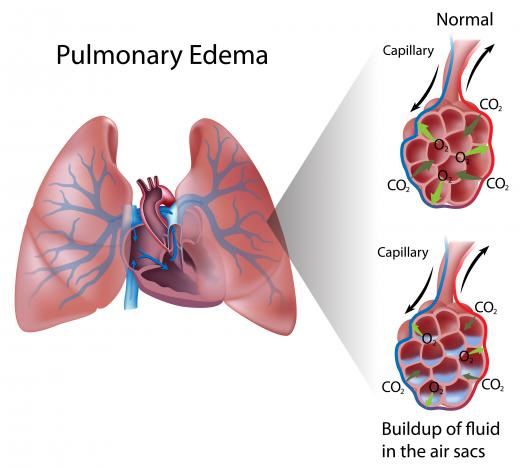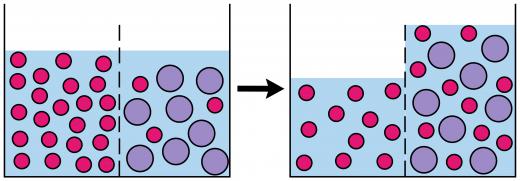What Is Osmotic Pressure?
Osmotic pressure is a volumetric force that resists the natural process of osmosis. It is most often referenced in human biology, where a living cell contains a concentrated solution of water and certain other elements that it separates from outside solutions by a semipermeable membrane. The natural process of osmosis tends to equalize the concentrations of solute materials in a solution by passing the solution through such membranes, and osmotic pressure is the quantity of pressure that a living cell exerts to resist this force. Such pressure protects inner components of the cell from dilution and harmful solutions that might cross the membrane and disrupt normal cell activity or mitosis.
Like many natural forces, osmosis is a force that drives solutions towards a state of equilibrium. When a solution surrounded by a thin membrane contains a higher concentration of a chemical, such as salt or sugar, than the same solution outside of the membrane, equilibrium forces drive the entire solution towards a state of uniform concentration of chemicals. This natural process is especially important in regard to water in lifeforms on Earth, which has a level of potential energy that causes it to dilute concentrated solutions through various forces such as osmosis and gravity. This condition is referred to as water potential, and the ability of water to exert this force increases with water's volume and depth, which is a form of osmotic hydrostatic pressure.

While water potential is an equalizing force for different solutions, the opposite of this force is known as osmotic potential, which is the value of potential energy that osmotic pressure has to resist a state of equilibrium. Calculations for determining the actual value of osmotic pressure were first worked out by Jacobus Hoff, a Nobel Prize-winning Dutch chemist of the late 19th to early 20th century. His ideas were later refined by Harmon Morse, a US chemist of the same time period.

Since the process of osmotic pressure can also be considered for gasses separated by a semipermeable membrane, it obeys the same physical rules as ideal gas law. The osmotic pressure equation can, therefore, be stated as P = nRT/V, where “P” is the osmotic pressure and “n” is the amount of solute or number of moles of molecules present in the volume — “V” — of solution. The value of “T” represents the average temperature of the solution and “R” is the gas constant value of 8.314 joules per degree Kelvin.
Though osmotic pressure is important in cellular biology for animals in terms of protecting the cell from intrusion by unwanted chemical solutes or the external solution itself, it serves a more fundamental purpose in plants. By counteracting the force of water potential, plant cells utilize osmotic pressure to lend a degree of turgidity or stiffness to plant cell walls. In combining this force among multiple plant cells, it gives the plant the ability to produce stems that stand upright and can resist damage from climate forces like wind and rain. This is why plants tend to wither and droop when they lack water, as the cell walls have insufficient osmotic hydrostatic pressure to resist the forces of gravity and weather conditions.
AS FEATURED ON:
AS FEATURED ON:












Discuss this Article
Post your comments